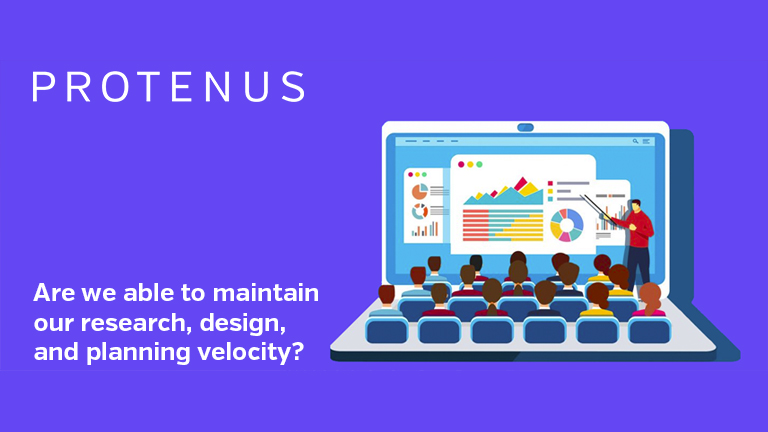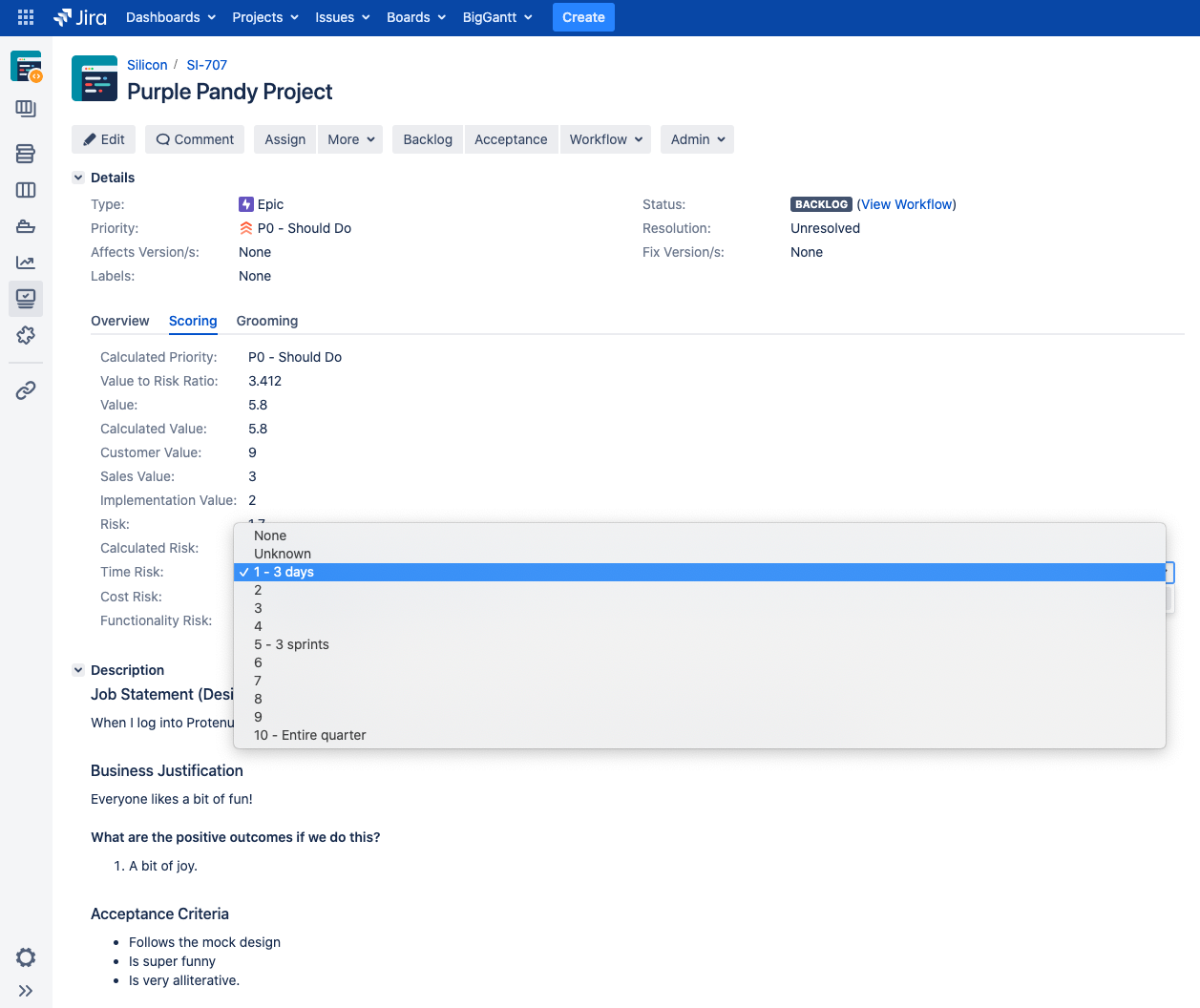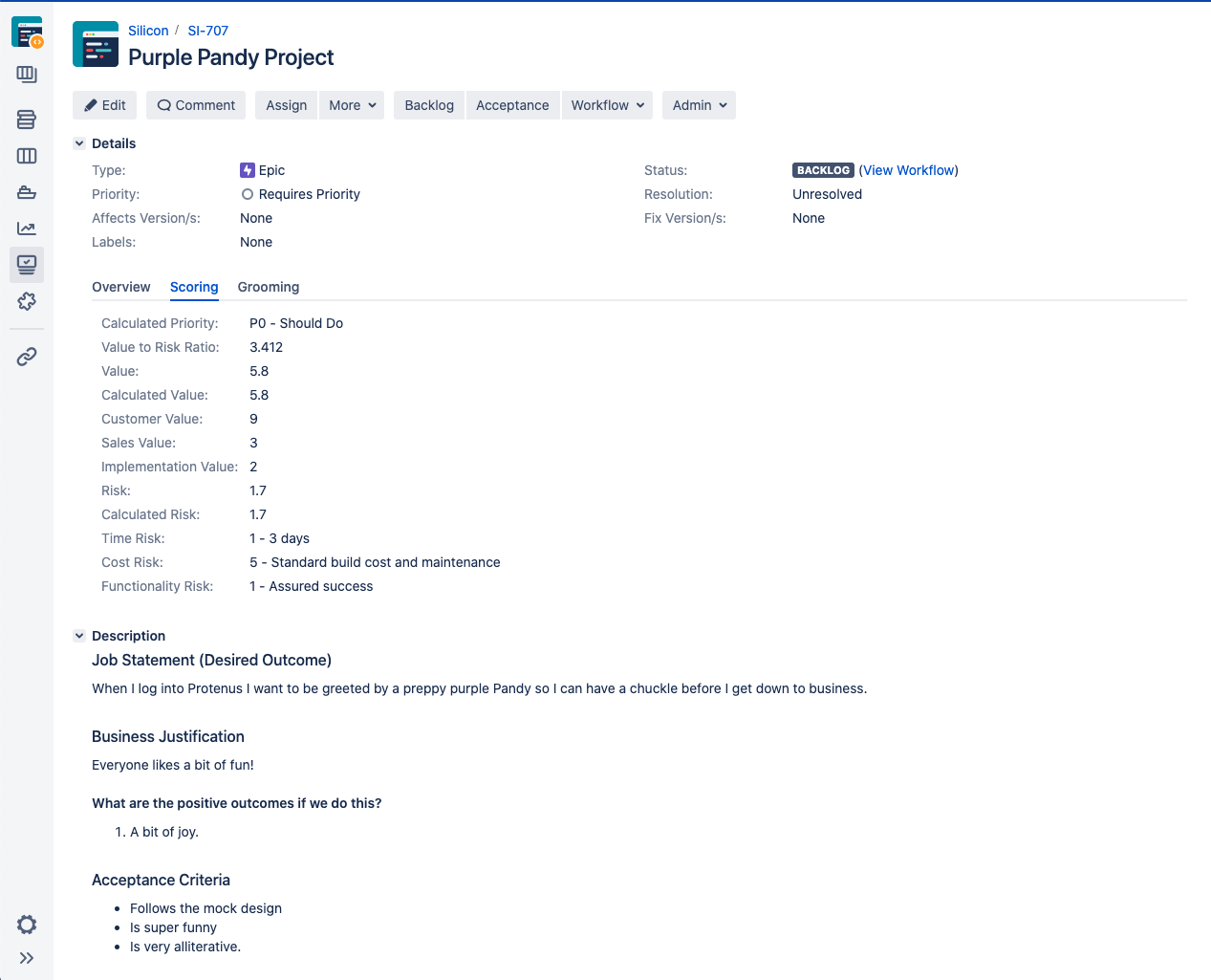Share this

Conducting Customer Research for Healthcare Product Development During the COVID-19 Pandemic
by James Schaffer on June 4, 2020
Subject matter experts are the lifeblood of product development at Protenus. Although these experts exist throughout the industry — as founders, external consultants, colleagues, or friends in the industry — our best information comes from our own customers. The conversations we have with them play a key role in influencing our quarterly product planning process.
That is why when the COVID-19 pandemic exploded across the United States the Protenus product team needed to quickly figure out how we were going to develop our products with a dramatically reduced level of customer access and input.
Our customers are some of the most well-known healthcare institutions in the United States. Since March, they have been on the frontlines fighting the COVID-19 pandemic. I asked Christa White, our Director of Customer Success, to describe the shock customers were experiencing. She said, “The impacts to both the institutions and individuals within them have been profound. It is not uncommon for some of our customers to now be dealing with partial team furloughs and mass budget cuts. Some privacy and compliance teams, our core user base, have been temporarily reassigned to IT support roles or registration roles for the drive-thru clinics. Many have requested assistance in managing the influx of new patients, requiring heightened privacy oversight and managing staff that are changing roles.”
It is rare for a startup to see a happy and engaged user base disappear. So how did we respond?
Our first thought was to look at various outreach and engagement tools. Due to security requirements or budget (the second you ask for a business associates agreement expect a meaningful sum to be added to your annual contract), we quickly rejected the common options on the market. Surveys that we had been using were insufficient because they were poor replacements for subject matter expertise. They mostly help to quantify something for you when you already have evidence of it being true.
That left us to turn to ourselves to create our own approach.
Virtualizing Customer Feedback
Ben Markowitz, our Principal Product Designer, proposed the idea of a virtual customer team. We looked at our entire company, people’s backgrounds, and experiences, and looked to see if we could simulate a customer relationship. The team was made up of the following:
Role 1 — CX Liaison
We were quickly realizing our numerous requests would need to be evaluated and fed through a single vertical-specific stream rather than through multiple customer success managers (CSMs). We assigned a CX liaison for each of our main products, Privacy and Diversion. They were to be the gatekeeper of all requests, ensuring the balance of customer happiness, especially with product research needs.
Role 2 — Virtual End Users
We then assigned two to three employees, mostly CSMs, to play part of the customer. They were instructed to walk and talk like a customer, to make demands from the perspective of customers, and to react to our inquiries as if they were customers.
The key to success here was Protenus’ history of successfully hiring people from the industry and sprinkling them across the business in sales, customer success, and professional services.
Rest of the team
Then of course you have the product manager and product designer.
Organizing the Team
Like everyone else, we were thrust into a full remote culture almost overnight. For this virtual team concept to function in our new environment we created a Slack channel for centralized communication and integrated both Zoom and JIRA plugins for quick collaboration sessions and transparent sharing of information.
We created feature specific channels once development started. Within that channel, we focused conversations exclusively on the development, testing, and deployment of the feature. We invited the engineers, product managers, designers, and the rest of the virtual team. The conversation remained laser-focused on that feature.
It may not sound like we did anything out of the ordinary, but the simple act of assigning roles within the team; centralizing conversations into specialized Slack channels with a logical progression; and limiting the tools to Figma (UI design), Zoom, and JIRA helped ensure clear communication and progress throughout product research and feature delivery.
A great example of the effectiveness of this team was when, upon its implementation, we immediately identified a gap with one of our major initiatives. We had made a key workflow assumption based on information that we had incorrectly interpreted. Thanks to the efforts of the virtual customer team, we caught the issue, adjusted our story, and minimized downstream scope creep.

Bonus: Prioritizing Customer Requests
Requests can put in motion a series of events that involve multiple parties across your customer’s institution. Knowing that every request burns capital, we often evaluate a feature via a scoring system that reflects Protenus’ alignment plan. Low risk, high value — go chat with the customer. High risk, high value — try some other avenues of research to reduce the risk before roping in a customer.
One of many options for scoring requests is to use a business-value vs risk-scale matrix. Many other great options are described in this amazing article by Folding Burritos. Our basic rule of thumb: don’t waste the customer’s time with low-impact or high-risk research right now. Wait for the situation to improve.

Conclusion
As the country gradually re-opens, customer discussions are starting to kick back into gear. The key outcome of this exercise was, “Are we able to maintain our research, design, and planning velocity?” during a national emergency? Based on our scoring, we took on more business value points in Q2 than Q1. And as of writing this, it appears that Q3 will exceed Q2 by +17% And finally, our two major features for our Diversion platform made it through to engineering, Running Cases, and Incident Viewer.
The key takeaway here is to promote the hiring of diverse subject matter experts when functioning in a niche B2B market. I have in the past hit a wall with companies reluctant to invest in these roles, but in a time of crisis, it is their knowledge that can help keep you moving with product development while your competitor is forced to build in the dark.
Are you looking to strengthen your technical recruiting efforts? Check out the e-book our Chief People Officer wrote on how we raised our Series B and doubled our headcount.
Share this
- December 1, 2024 (3)
- November 1, 2024 (1)
- October 1, 2024 (2)
- September 1, 2024 (1)
- August 1, 2024 (1)
- July 1, 2024 (1)
- June 1, 2024 (1)
- May 1, 2024 (1)
- March 1, 2024 (2)
- February 1, 2024 (3)
- January 1, 2024 (1)
- December 1, 2023 (1)
- November 1, 2023 (3)
- October 1, 2023 (3)
- September 1, 2023 (1)
- August 1, 2023 (1)
- July 1, 2023 (2)
- April 1, 2023 (1)
- March 1, 2023 (1)
- February 1, 2023 (1)
- December 1, 2022 (3)
- November 1, 2022 (3)
- October 1, 2022 (1)
- September 1, 2022 (1)
- August 1, 2022 (2)
- June 1, 2022 (4)
- May 1, 2022 (5)
- April 1, 2022 (1)
- March 1, 2022 (4)
- February 1, 2022 (3)
- November 1, 2021 (2)
- October 1, 2021 (3)
- September 1, 2021 (3)
- August 1, 2021 (3)
- July 1, 2021 (4)
- June 1, 2021 (2)
- May 1, 2021 (2)
- April 1, 2021 (2)
- March 1, 2021 (5)
- February 1, 2021 (1)
- January 1, 2021 (1)
- December 1, 2020 (1)
- November 1, 2020 (2)
- October 1, 2020 (2)
- September 1, 2020 (3)
- August 1, 2020 (2)
- July 1, 2020 (2)
- June 1, 2020 (6)
- May 1, 2020 (3)
- April 1, 2020 (4)
- March 1, 2020 (2)
- February 1, 2020 (4)
- January 1, 2020 (2)
- December 1, 2019 (2)
- November 1, 2019 (1)
- October 1, 2019 (1)
- September 1, 2019 (1)
- August 1, 2019 (1)
- June 1, 2019 (1)
- April 1, 2019 (1)
- February 1, 2019 (1)
- January 1, 2019 (1)
- December 1, 2018 (2)
- November 1, 2018 (2)
- October 1, 2018 (2)
- September 1, 2018 (3)
- August 1, 2018 (1)
- July 1, 2018 (2)
- June 1, 2018 (2)
- May 1, 2018 (1)
- April 1, 2018 (1)
- March 1, 2018 (2)
- February 1, 2018 (6)
- January 1, 2018 (2)
- September 1, 2017 (2)
- August 1, 2017 (2)
- June 1, 2017 (2)
- May 1, 2017 (1)
- April 1, 2017 (1)
- March 1, 2017 (2)
- February 1, 2017 (5)
- January 1, 2017 (2)
- December 1, 2016 (3)
- November 1, 2016 (5)
- October 1, 2016 (4)
- September 1, 2016 (8)
- August 1, 2016 (4)
- July 1, 2016 (4)
Subscribe by email
You May Also Like

Conserving Resources with Compliance Analytics: A 5-Step Implementation Guide

Enabling Greater Healthcare Efficiency with Protenus AI Technology

